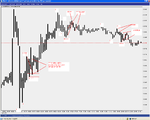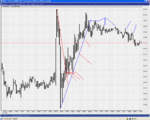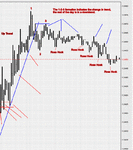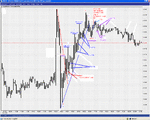One Eyed Shark
Well-known member
- Messages
- 257
- Likes
- 13
The discussion re: entry and the success of trading the RH is entirely relevant to the market and product you are trading, if you are looking to trade the FTSE 100 using a spread betting co, intraday then in my opinion you will take losses.
If you are trading the US indices/FX using futures this strategy pays, I know because I trade it and the longest timeframe I use is 5 min.
It is entirely irrelevant what timeframe you use.
If I was to take the time period off the bottom of a chart how many would be able to say if it is a 5 min or a daily, a chart is a chart.
What is important is the size and and risk we are willing to trade and that will vary for each of us.
I would much rather trade 6 contracts with a profit target of 6 ticks on a strategy that will give me atleast 70% winning trades than trade 2 contracts looking for 18 ticks. To me this business is not about making profits, my focus is on not taking losses, but hey thats me and everybody else is going to be different.
I watched Newtron Bomb's video yesterday on the 15 minute breakout , if you are looking to trade the RH check it out in the Knowledge Lab, NB obviously knows what he is talking about and gives excellent commentary to the RH on a breakout from congestion
If you are trading the US indices/FX using futures this strategy pays, I know because I trade it and the longest timeframe I use is 5 min.
It is entirely irrelevant what timeframe you use.
If I was to take the time period off the bottom of a chart how many would be able to say if it is a 5 min or a daily, a chart is a chart.
What is important is the size and and risk we are willing to trade and that will vary for each of us.
I would much rather trade 6 contracts with a profit target of 6 ticks on a strategy that will give me atleast 70% winning trades than trade 2 contracts looking for 18 ticks. To me this business is not about making profits, my focus is on not taking losses, but hey thats me and everybody else is going to be different.
I watched Newtron Bomb's video yesterday on the 15 minute breakout , if you are looking to trade the RH check it out in the Knowledge Lab, NB obviously knows what he is talking about and gives excellent commentary to the RH on a breakout from congestion










